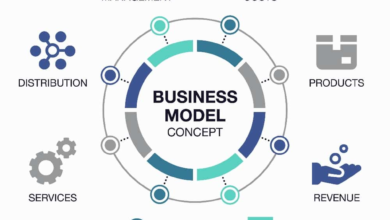Free Customer Service Course with Certification – Call Center Work Guide

In today’s highly competitive business world, the quality of a product or service alone is no longer enough to earn customer satisfaction and loyalty. Customer service has become one of the most critical factors that differentiate successful companies from others. Every interaction between a customer and a business is an opportunity to build a strong relationship or, conversely, to damage the impression and lose trust.
With the digital evolution and the multiplicity of communication channels, customer service has become the face and true voice of a company. As such, mastering customer service is a long-term investment in success and sustainable growth.
What is Customer Service?
Customer service refers to the support and assistance a company provides to its customers before, during, and after the purchase of a product or service. This process includes responding to inquiries, handling complaints and feedback, and offering solutions to issues customers may encounter while using the products or services. Customer service is one of the most essential tools for building business relationships, enabling businesses to gain deeper insights into customer needs and develop services that align with their expectations.
Customer service varies between face-to-face communication, phone calls, emails, social media, or live chat on websites. As consumer behavior rapidly changes, it has become necessary for companies to be present on multiple channels to provide timely and effective support.
Customer service is not just about answering inquiries or complaints; it reflects the company’s culture and its genuine commitment to customer satisfaction. The quality of service shows how dedicated a business is to providing a positive and complete experience for every customer who interacts with it.
The Importance of Customer Service in Business Success
Customer service plays a crucial role in enhancing a company’s position in the market. The quality of interactions with customers can significantly affect sales and customer loyalty. A customer who receives excellent service is likely to become a repeat customer and may even act as a brand ambassador by recommending the business to others.
Recent studies show that more than 70% of customers will switch service providers due to a bad customer service experience, even if the product itself is good.
Moreover, companies that invest in building qualified and efficient customer service teams often witness a decline in complaint rates and an increase in satisfaction and trust ratings, which ultimately leads to higher sales and sustainable profits.
Good customer service enhances the brand’s value and helps the company gain a positive reputation among consumers, and it also serves as an essential tool for gathering feedback and data that enable the company to continuously improve its products and services.
Types of Customer Service
Customer service varies based on the nature of the business and the preferred communication methods of the customers. Some customers prefer face-to-face interaction, while others favor digital channels. Generally, customer service can be categorized into five main types.
Traditional Face-to-Face Service
This type of service is provided in stores, branches, or service centers, where there is direct interaction between the customer and the service representative. It is one of the most personal forms of customer service that allows for building a direct relationship and providing immediate support. This method is commonly used in sectors such as banking, retail, and government services.
Phone-Based Customer Service
This is one of the most widely used methods, where customers contact the company via phone to inquire, file complaints, or receive technical support. Call centers are widely used to manage this type of service, and they have increasingly relied on technologies such as automated responses and intelligent call routing.
Email-Based Customer Service
This method is commonly used for matters that require formal documentation or detailed explanations. It provides customers with the flexibility to send their requests at any time and receive a response within a specified time. Email is an effective tool for dealing with complex or recurring issues that do not need immediate responses.
Live Chat Customer Service
Live chat has become a core feature on most e-commerce websites and digital services. It provides immediate and seamless communication between the customer and the company representative, allowing for fast and effective problem resolution. This service is often enhanced using technologies like chatbots, which answer frequently asked questions.
Social Media Customer Service
In the digital age, customer interactions with businesses are no longer confined to traditional channels. Social media platforms like Facebook, Twitter, Instagram, and TikTok have become primary customer service platforms, where inquiries are answered, complaints addressed, and updates or clarifications shared.
The advantage of these platforms is their public nature and quick response time, which requires companies to respond promptly and courteously to maintain a good image in the public eye.
Skills of a Successful Customer Service Representative
To succeed in customer service, a representative must possess several essential skills that enable them to effectively handle various customers and situations.
One of these skills is effective communication, both verbally and in writing, allowing the representative to convey information clearly and to listen actively to understand customer needs. In addition, the representative should have problem-solving skills to quickly analyze the situation and offer the most appropriate solution.
Another vital skill is patience and self-control, especially when dealing with angry or difficult customers. Responding courteously and empathetically can turn a negative situation into a positive one.
Moreover, emotional intelligence plays a significant role in success, helping the representative understand customer feelings and provide human-centered support. Additionally, flexibility and adaptability to changes, as well as knowledge of technological tools like CRM systems, are essential skills.
The Difference Between Customer Service and Customer Experience
Some people confuse the terms “customer service” and “customer experience,” although there is a clear distinction between them. Customer service refers to the direct support provided to the customer during or after a purchase. It is primarily concerned with reactions and actions taken to resolve a problem or fulfill a request.
On the other hand, customer experience is a broader concept that encompasses all the interactions and impressions the customer has throughout their journey with a company, from the awareness stage, through the purchase process, and even after the service is completed.
While customer service focuses on direct interactions, customer experience focuses on overall feelings and impressions, including product design, user interface, ease of use, and other factors. Both aspects are crucial for ensuring customer loyalty and business success.
How to Deal with Angry Customers
Dealing with angry customers is one of the most challenging situations that customer service representatives face and requires high skill and emotional calm.
The first step is to actively listen without interrupting, giving the customer an opportunity to express their frustration. Afterward, the representative should show empathy by acknowledging the customer’s feelings with phrases like “I understand how you feel,” which helps calm the situation.
Then, comes the stage of offering the most appropriate solution as quickly as possible, while involving the customer in choosing the solution, if possible. Finally, it is essential to reaffirm the commitment to better service in the future to restore the customer’s trust.
It is crucial for the representative to maintain a calm tone of voice and respectful language throughout the interaction and not take the situation personally, but rather view it as part of their professional responsibilities.
Customer Service
Tools and Technologies for Supporting Customer Service
With the advancement of technology, many tools have emerged to enhance customer service, such as:
- Customer Relationship Management (CRM) systems, which enable businesses to track customer data and interaction history.
- Live chat programs and chatbots, providing immediate responses.
- Smart email systems, automatically directing messages to the appropriate department.
- Data analytics, helping to understand customer behavior and predict needs.
- Ticketing systems, used to track customer requests and resolve them in an organized manner.



